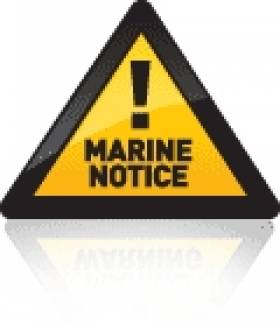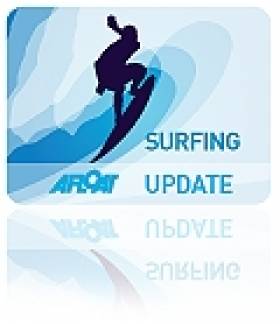Displaying items by tag: Ballinspittle
A houseboat with a difference adds to a growing number of quirky holiday options in Ireland.
‘Nesbit’ is a former naval tender that’s been transplanted to the farm Dawna Connolly shares with her husband and their two young children near Ballinspittle.
Formerly a lab technician, Dawna decided she was working just to pay for childcare, and wanted a change of pace for her family.
She found just the ticket in an old cottage on their farm, which was spruced up as an AirBnB rental for visitors attracted to the many charms of West Cork.
The cottage quickly proved a hit, and got Dawna thinking about how to stand out from the crowd in a growing marketplace for ‘glamping’ experiences like the notorious ‘Big Yoke’, a converted Boeing 767 fuselage in Enniscrone.
Dawna considered various options from a boutique bell tent to a shepherd’s hut, till she hit upon the notion of a houseboat for landlubbers. That’s where Nesbit comes in.

The 37ft motorboat has been lovingly and painstakingly refreshed by Dawna and her father over the last 18 months from a heap fit for the scrapyard into a delightfully cozy abode.
Despite its compact size, Nesbit comes complete with her own kitchen unit and bathroom — and is accessible via a repurposed door from a Scottish ice ship, a nod to the homeland of Dawna’s spouse.

Suitable for a couple or a small family, Nesbit has pride of place at the heart of the Connollys’ farm, home to a number of donkeys, the odd cow and even an alpaca.
But if the sea is calling, it’s only 10 minutes by car to Kinsale.
Marine Notice: Geophysical Survey Off Cork Coast
#MarineNotice - The latest Marine Notice from the Department of Transport, Tourism and Sport (DTTAS) advises that TE SubCom, on behalf of Hibernia Express, is scheduled to carry out a geophysical cable route survey extending south from Ballinspittle.
The survey involves multibeam echo-sounder bathymetry, side-scan sonar, magnetometer and sub-bottom profiling off the Irish coast from Ballinspittle, Co Cork, heading south to the 12nm limit and then into Ireland’s EEZ.
The survey will start on 21 July 2014 and will last for approximately four days, weather permitting. Works will be carried out by the vessel RV Ridley Thomas (Callsign V7JK2).
Inshore at Ballinspittle, shallow water survey operations will be carried out by RV Wessex Explorer (Callsign 2WWE).
Both vessels will be towing survey equipment up to 200m astern and will be restricted in their ability to manoeuvre while carrying out the survey. They will also be listening on VHF Channel 16 throughout the project.
All other vessels, particularly those engaged in fishing, are requested to give the RV Ridley Thomas and her towed equipment and the RV Wessex Explorer a wide berth, and keep a sharp lookout in the relevant areas.
Full details of co-ordinates and maps of the survey area are included in Marine Notice No 39 of 2014, a PDF of which is available to read or download HERE.
Ballinspittle a Popular Haunt for Surfing Crowd
#SURFING - The Irish Examiner reports on the "little economic miracle" that is Ballinspittle in Co Cork, a village that's "bucking the national economic trend" via its plethora of local businesses - and its close proximity to quality surf.
The village has "witnessed a inflict of Australians and South Africans" among others "in search of a surfing haunt", thanks to the nearby Blue Flag beaches at Garrettstown and Garrylucas.
John Hynes, who runs the surfing school GTown Surf, says Cork's coast is "one of the most consistent stretches in the south" that's "perfect for budding surfers. So, there's no excuse for not getting out there and enjoying the waves."
The Irish Examiner has more on the story HERE.































































